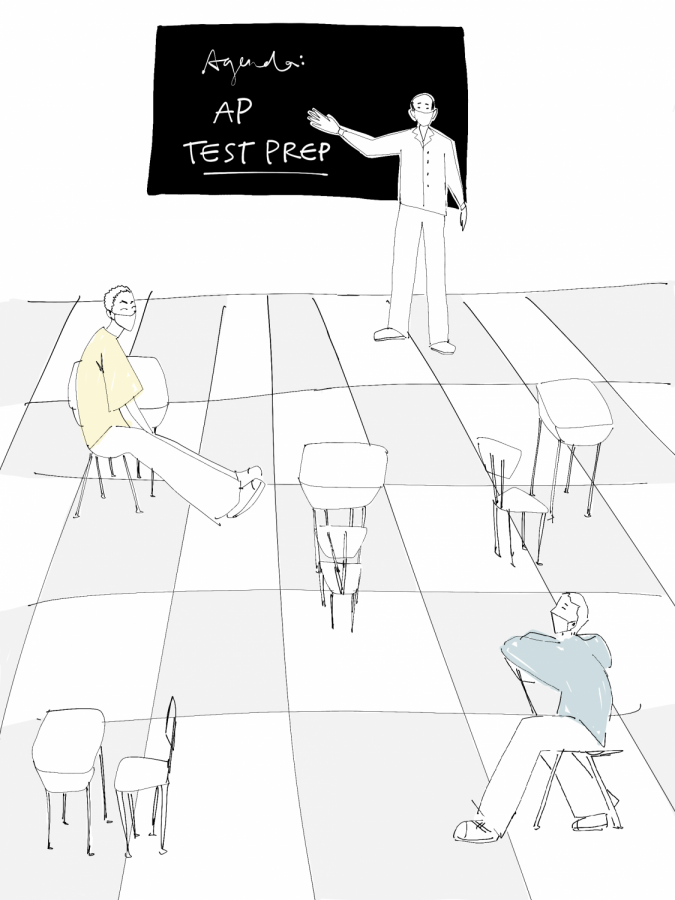Hybrid Learning: A Dangerous and Ineffective Solution to Education During the Pandemic
October 5, 2020
The hybrid learning model is highly seductive. Far from calling for an all-out return to school, it lets students attend physical classes in smaller, often safer groups. In theory, this model allows for the benefits of in-person schooling without the danger. In practice however, hybrid learning would not be a significant improvement over either in-person or remote learning, and it could end up being even worse. In a survey taken by Student School Committee members Anais Killian and Nuriel Vera-DeGraff, proponents said that hybrid learning would lead to increased motivation, better mental health, an easier learning experience, and more opportunities to socialize. Detractors anticipated a messy, rushed reopening, noting that marginalized students are harmed by COVID-19 at a higher rate than other populations. Many believed the risk was “unacceptable.”
Several hybrid models exist. The most popular one has students attend core classes in-person, which allows for face-to-face learning in important areas, but leaves everything else remote. Due to reduced class sizes, it’s unlikely that there would be enough teachers to accomplish this with a normal schedule, so the amount of time spent in these classes might have to be reduced. Additionally, it’s possible that electives in core areas could be cancelled to prioritize non-elective core classes. Implementation would be further complicated by the varying number of core courses each student takes.
Another model allows one grade into the school each day and rotates through the student body until everyone has spent time learning in-person. This gives all students time to participate in face-to-face lessons and interact with their peers. However, since class sizes would have to be reduced, entire classes would not be able to meet. As a result, only part of each class would be able to come into the classroom, leaving the rest to attend remotely. While the in-person group would generally have a positive experience with this, it would become even harder for remote students to contribute to discussions and stay focused, leaving them at a disadvantage. Even without these problems, such a model would be extremely complicated to schedule.
The student body could also be split into a “morning” and “afternoon” group, leaving each class with far fewer students. This model comes closest to a full return to school and allows for the most time spent in-person. As such, it has most of the benefits of full in-person learning, though it comes with high risk. Additionally, such a model creates an infeasible workload for teachers, as it requires them to teach for twice as long. However, aside from the increased risk, this model comes with few complications for students.
The final model, which CPS has put into practice, leaves most of the school remote while keeping students who are in immersion learning programs or have special needs in-person. This model carries the least risk and is generally easiest on both students and teachers.
According to an article in the New York Times, New York City’s hybrid return to school plan has been “a logistical morass.” Struggling to find enough teachers to double its staff size, the district has had to move its reopening back twice. Some schools, unable to provide a proper hybrid experience, asked students to opt out of in-person learning. Some teachers simply streamed their in-person class to students, while others had their in-person students attend the remote learning Zoom call from their classrooms.
A major drawback of a remote model is the lack of human contact, and hybrid models could potentially remedy that. However, strictly enforced social distancing leaves people with few opportunities to hang out with friends, chat, or attend clubs. Additionally, these models put everyone at a significantly higher risk than remote learning. They’re complicated, leave teachers with high or even infeasible workloads, and getting technology to work for both in-person and remote groups would be challenging. They put those who can’t attend class—particularly as a result of health conditions—at a disadvantage.
A full return to school is dangerous, and hybrid models are not much better. They give us the worst of both in-person and remote learning. Remote learning is far from ideal, but it’s the simplest, safest, and most equitable strategy available right now.









